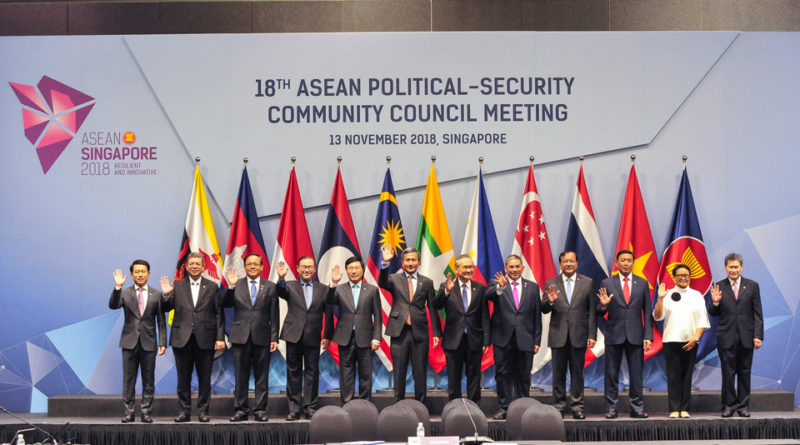Southeast Asia: Hiding in Plain Sight
.
.
Ask many American, German or Canadian businesses or investors about “Asian business opportunities,” and they are likely to think “China,” and perhaps “India.” Southeast Asia – home to countries including Indonesia, Malaysia, Singapore and the Philippines – is likely to be an afterthought.
That is a pity. As we head into 2019, probably more than at any other time in the recent past, this fast-growing region is worth a serious look as a location to manufacture in, source from and sell to. That’s despite the downturn in global emerging markets over the past few months.
Sheer size is part of the story, and it’s often not fully recognized by observers outside Asia.
.
.
ADS by Cloud 9:
– SPACE RESERVE FOR YOUR ADVERTISEMENT –
.
.
Taken together, the 10 members of the Association of Southeast Asian Nations (Asean) form an economic powerhouse whose combined GDP of nearly USD 2.8 trillion in 2017 topped that of the UK, France or India in US dollar terms. Put another way: If Asean were a single economy, it would rank sixth globally, after only the US, China, Japan, Germany and the Eurozone.
Or take population. Asean’s 650 million people outnumber the population of the US by 2:1, that of the UK by almost 10:1. By 2030, their numbers will have swelled by another 80 million – or roughly the equivalent of the population of Turkey.
But it’s what’s going on beneath those headline numbers that is turning Southeast Asia into a bright spot on the global economic stage.
.
.
ADS by Cloud 9:
– SPACE RESERVE FOR YOUR ADVERTISEMENT –
.
.
Today’s emerging-market jitters obscure, for now, how far the region has come since the 1997-1998 Asian Financial Crisis, or even the “Taper Tantrum” of 2013.
Its constituent economies, broadly speaking, are now more resilient to external financial shocks.
Foreign exchange reserves have risen. External debt levels have come down. Current account balances have improved.
The region’s manufacturing capabilities, meanwhile, play an integral role in global trade and supply chains – and, like in China, businesses are going high-tech. Look across the region, and you will find factories that produce anything from high-end fabrics to hard drives and semiconductors.
.
.
ADS by Cloud 9:
– SPACE RESERVE FOR YOUR ADVERTISEMENT –
.
.
What’s more, many companies, both established and start-ups, now have the experience and clout to serve international markets and attract sizeable investments from abroad. Witness how Jollibee, a popular fast-food company, has expanded beyond its home market in the Philippines, with the goal of becoming a leading global player.
Or how Singapore and Indonesia have spawned start-ups like e-commerce portal Lazada and ride-hailing-to-payments companies Grab and Go-Jek, which are rapidly becoming ubiquitous on streets and smartphones across much of the region.
On the consumption front, urbanization and improving infrastructure have put millions within reach of higher-paying jobs and better education, healthcare and financial services opportunities. For many Indonesian, Vietnamese, Filipinos or Thais, a flight to Hong Kong, London or even San Francisco is no longer a financial impossibility. A new car or a life insurance policy? For the first time, it’s something to consider.
.
.
ADS by Cloud 9:
– SPACE RESERVE FOR YOUR ADVERTISEMENT –
.
.
No wonder that a survey by the EU-Asean Business Council in 2018 found 99 percent of European businesses in the region expect to maintain or expand their trade and investment there over the next five years. Meanwhile, HSBC’s recent Navigator survey of companies around the world found respondents in Southeast Asia to be the most upbeat on the global trading environment.
True, doing business in this sprawling and breath-takingly diverse region is not without challenges. Swings in commodity prices and global investor sentiment still have the capacity to hurt individual economies to different degrees. And while tariffs on goods traded between Asean members have effectively been eliminated, and global trade tensions may actually see production and supply chains move toward the region, that does not mean that policy makers and companies can afford to stand still.
More needs to be done to remove obstacles to the flow in services and labour, lower cross-border financial transaction costs and erode non-tariff barriers, for example, and continued investment in education and productivity growth is key.
.
.
ADS by Cloud 9:
– SPACE RESERVE FOR YOUR ADVERTISEMENT –
.
.
Then there are the momentous changes that will come with technological advances (robotics, 3-D printing, A.I., the Internet of Things) and climate change (to which much of Southeast Asia is particularly vulnerable). Addressing these will require national policymakers increasingly to think and act beyond election cycles and domestic political dynamics.
At the end of the day, Asean is not the EU: integration does not aim to reach into the realms of politics.
Nevertheless, the direction of travel is clear and is unlikely to be derailed by global trade tensions and periodic emerging-market nervousness. The coming years are set to bring more economic and financial cohesion and intra-regional trade. Domestic and intra-Asian infrastructure initiatives will improve physical connectivity.
.
.
ADS by Cloud 9:
– SPACE RESERVE FOR YOUR ADVERTISEMENT –
.
.
And consumption and innovation will pick up speed as urbanisation and increasing internet and smartphone penetration transform the way 650 million people shop, bank and exchange information.
Anyone who is even remotely interested in Asia needs to have this part of the continent firmly on their radar – or risk missing out on one of the world’s most dynamic growth stories.
Matthew Lobner is President Commissioner at Bank HSBC Indonesia. He is Head of International, Asia-Pacific and Head of Strategy and Planning, Asia-Pacific, HSBC. Matthew joined the HSBC Group in 2005 from McKinsey & Company and has worked in various roles in the United States of America, United Kingdom and Asia.
..
ADS by Cloud 9:
– SPACE RESERVE FOR YOUR ADVERTISEMENT –
.
.
.

All photographs, news, editorials, opinions, information, data, others have been taken from the Internet ..aseanews.net | [email protected] |.For comments, Email to :D’Equalizer | [email protected] | Contributor











